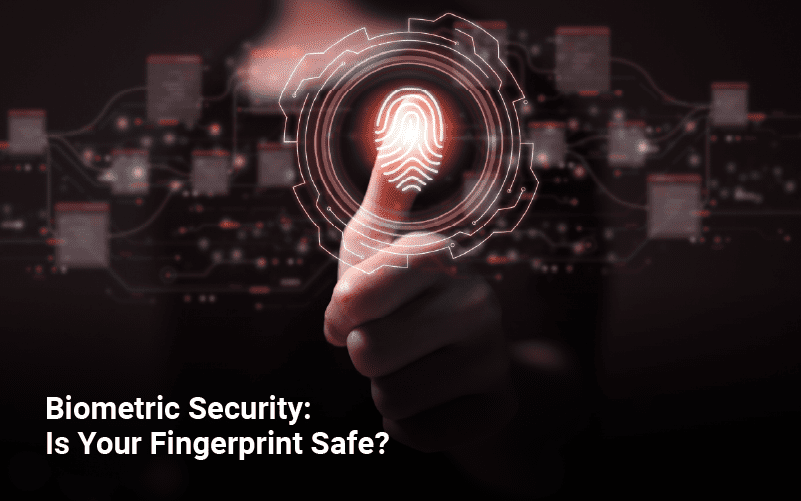In today’s digital age, cybersecurity threats have become a major concern for organizations of all sizes and industries. Cyberattacks can result in significant financial loss, reputational damage, and legal liability. Therefore, building a comprehensive cybersecurity strategy that covers prevention, detection, response, and recovery is crucial for organizations to protect themselves from cyber threats.
What is a cybersecurity strategy?
A cybersecurity strategy is a comprehensive plan that outlines an organization’s approach to protecting its digital assets from cyber threats. It involves identifying and assessing potential risks to the organization’s information systems, networks, and data, as well as implementing controls and measures to prevent, detect, and respond to cyberattacks. A cybersecurity strategy should cover all aspects of an organization’s security, including technical and operational controls, as well as employee training and awareness programs. It should also be periodically reviewed and updated to stay current with the evolving threat landscape and changes within the organization. A well-designed and implemented cybersecurity strategy is essential to minimize the risks of cyberattacks and protect the confidentiality, integrity, and availability of an organization’s digital assets.
In this article, we will discuss the key components of a comprehensive cybersecurity strategy, from prevention to response, to help organizations build an effective defense against cyberattacks. Building a comprehensive cybersecurity strategy is crucial for organizations to protect their assets and prevent cyberattacks. Here are the steps to follow:
- Step 1:
- Identify and assess the risks: Conduct a risk assessment to identify the potential threats and vulnerabilities that could impact your organization’s security. This process should include an evaluation of the types of data you store, the systems and applications you use, and the potential consequences of a breach.
- Step 2:
- Develop a plan: Based on the risk assessment results, develop a cybersecurity prevention plan that outlines the measures you will take to mitigate the identified risks. This plan should include policies and procedures for incident response, data backup and recovery, access controls, and network security. Some relevant strategies include:
- Incident response planning: Having a plan in place to respond to cyberattacks, including assigning roles and responsibilities and defining procedures for containing and mitigating the attack.
- Containment: Isolating the affected systems to prevent the attack from spreading to other parts of the network.
- Remediation: Identifying and removing the cause of the attack, such as malware or a vulnerability, and patching the affected systems.
- Develop a plan: Based on the risk assessment results, develop a cybersecurity prevention plan that outlines the measures you will take to mitigate the identified risks. This plan should include policies and procedures for incident response, data backup and recovery, access controls, and network security. Some relevant strategies include:
- Step 3:
- Educate and train employees: Your employees are often the weakest link in cybersecurity, so providing them with ongoing education and training on cybersecurity best practices is essential. This includes regular awareness training, phishing simulations, and password management policies.
- Step 4:
- Implement and monitor controls: Implement the controls and technologies identified in your cybersecurity plans, such as firewalls, antivirus software, intrusion detection systems, and encryption. These controls should be monitored regularly to ensure they are working as intended. Some prevention strategies include:
- Endpoint security: Installing antivirus, anti-malware, and firewalls to protect endpoints such as desktops, laptops, and mobile devices.
- Network security: Using firewalls, intrusion detection systems, and intrusion prevention systems to protect your network from cyber threats.
- Data protection: Encrypting sensitive data, using access controls, and implementing secure backups and disaster recovery procedures.
- Implement and monitor controls: Implement the controls and technologies identified in your cybersecurity plans, such as firewalls, antivirus software, intrusion detection systems, and encryption. These controls should be monitored regularly to ensure they are working as intended. Some prevention strategies include:
- Step 5:
- Test and update your plan: Regularly test your cybersecurity plan to identify gaps and weaknesses. This should include vulnerability assessments, penetration testing, and tabletop exercises to simulate cyberattacks. Use the results of these tests to update your plan and improve your defenses. Some detection strategies include:
- Security monitoring: Use security tools such as SIEM (Security Information and Event Management) to monitor your systems for signs of cyberattacks.
- Vulnerability scanning: Regularly scan your systems for vulnerabilities and weaknesses that could be exploited by cyber attackers.
- Threat intelligence: Keeping up-to-date on the latest threats and trends in cybersecurity to identify new and emerging threats.
- Test and update your plan: Regularly test your cybersecurity plan to identify gaps and weaknesses. This should include vulnerability assessments, penetration testing, and tabletop exercises to simulate cyberattacks. Use the results of these tests to update your plan and improve your defenses. Some detection strategies include:
- Step 6:
- Continuously improve: Cybersecurity threats are constantly evolving, so staying up-to-date on the latest threats and technologies is essential. Continuously monitor your systems and update your cybersecurity plan as needed to ensure you are always prepared to defend against new threats. Some recovery strategies include:
- Backup and recovery: Having a backup and recovery plan in place to restore systems and data in case of an attack.
- Testing and validation: Testing the backup and recovery plan to ensure it is effective and can restore systems and data in case of an attack.
- Lessons learned: Conduct a post-incident review to identify areas for improvement and update the cybersecurity plan based on the lessons learned.
- Continuously improve: Cybersecurity threats are constantly evolving, so staying up-to-date on the latest threats and technologies is essential. Continuously monitor your systems and update your cybersecurity plan as needed to ensure you are always prepared to defend against new threats. Some recovery strategies include:
Developing and implementing a cybersecurity strategy is an ongoing process that presents various challenges. Regularly monitoring and reassessing your organization’s cybersecurity maturity is essential to measure progress toward your objectives. Internal and external audits, simulated tests, and exercises can help identify areas that are falling behind and need improvement. It’s crucial to be prepared to adapt your cybersecurity strategy if a new major threat emerges. Agility in security is becoming increasingly important, and updating your strategy as cyber threats and security technologies evolve, and your organization acquires new assets that need protection should not be feared.
How can EC-Council University help you with this?
EC-Council University (ECCU) offers various degree and certification programs in cybersecurity to help professionals develop the skills and knowledge needed to build and implement effective cybersecurity strategies. ECCU’s cybersecurity degree programs, such as the Bachelor of Science in Cybersecurity, cover key topics such as risk management, incident response, and cybersecurity laws and regulations. ECCU’s graduate certifications programs, such as Cloud Security Architect and Incident Management and Business Continuity, provide professionals with the technical and leadership skills necessary to protect organizations from cyber threats. Additionally, ECCU’s training and resources can help organizations assess their cybersecurity maturity, identify areas for improvement, and develop and implement effective cybersecurity strategies. By partnering with ECCU, organizations can leverage the expertise of a leading cybersecurity education provider to build a comprehensive cybersecurity strategy and ensure their staff is well-equipped to protect against cyber threats.
FAQ:
Ans. There is no single “most comprehensive” cybersecurity solution as it depends on an organization’s specific needs, budget, and risk profile. A comprehensive cybersecurity solution typically involves a combination of security tools, technologies, and best practices that work together to protect an organization’s digital assets.
Ans. There are many prevention measures for cyberattacks, but three key measures are:
- Implementing strong access controls: This involves limiting user access to sensitive systems and data based on their role, responsibilities, and need-to-know. This can be achieved through password policies, multi-factor authentication, and privileged access management.
- Regularly updating and patching systems: Cyber attackers often exploit vulnerabilities in software to gain access to systems. Regularly updating and patching systems with the latest security patches can help prevent attackers from exploiting these vulnerabilities.
- Conducting regular security awareness training: Employees are often the weakest link in an organization’s security, as they may unwittingly click on malicious links or fall victim to phishing attacks. Regularly conducting security awareness training can help educate employees on how to identify and avoid common cyber threats.
Ans. Cybersecurity preventive measures include strong access controls, regular system updates, and patches, security awareness training for employees, firewalls and antivirus software, encryption, and data protection technologies, regular data backups, and intrusion detection and prevention systems. These measures can help protect an organization’s systems and data from cyber threats. However, it’s important to note that cybersecurity is an ongoing process and organizations should continuously reassess their security posture and adjust their preventive measures as needed to stay protected against evolving cyber threats. No single preventive measure can provide complete protection, so a combination of these measures should be implemented to provide comprehensive cybersecurity.








